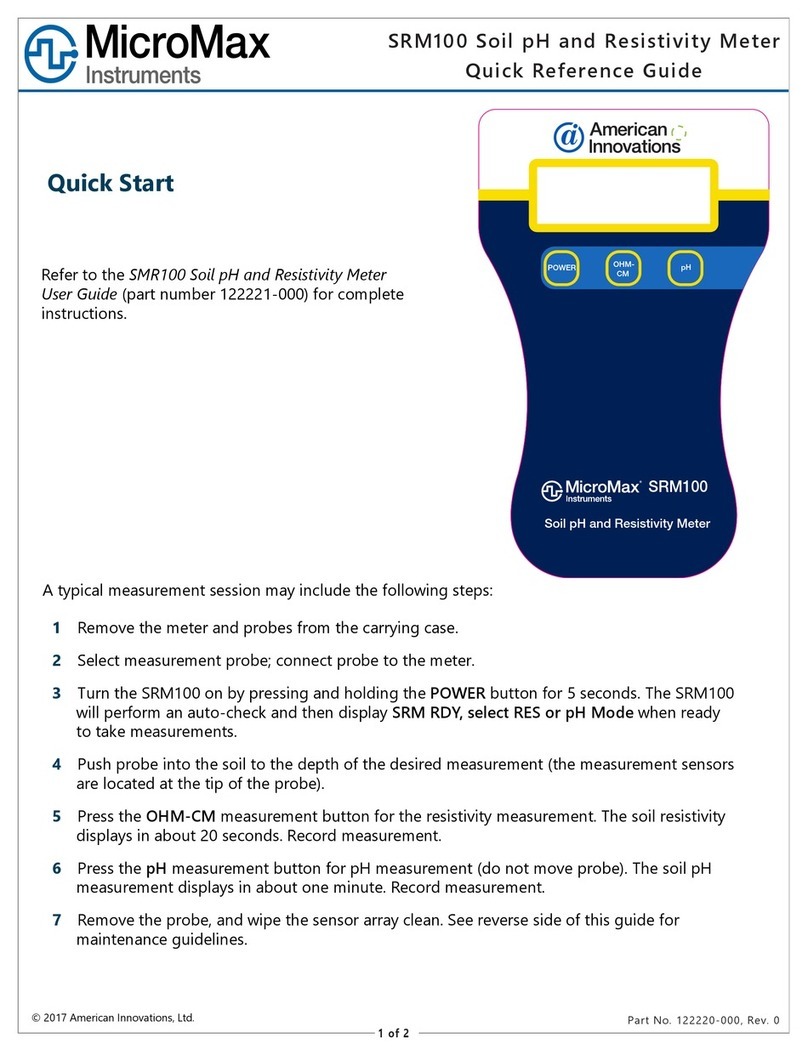
1
SRM100 Soil pH and Resistivity Meter User Guide 1
Chapter 1: Getting Started
The MicroMax SRM100 Soil pH and Resistivity meter is a portable, weather-resistant (NEMA 4), hand
held instrument for measuring the pH and resistivity of soil. The soil pH and resistivity
measurements are digitally processed and displayed on the meter's numeric LCD display. Soil pH
measurements are shown in standard pH units, while resistivity measurements are shown in ohm-cm.
The SRM100 meter incorporates both the measurement of soil pH and soil resistivity from sensors in
one convenient and rugged probe.
For soil resistivity measurements, the SRM100 meter generates a bipolar square wave at a frequency
that is non-harmonic with 60 Hz (97 Hz). This voltage is sensed through a calibrated geometric gap
in the tip of the probe and is then converted directly to ohm-cm units on the display. The soil pH is
measured by the chemical reaction between two elements to provide a voltage proportional to pH.
This voltage is conditioned and converted to pH units on the display.
Overview
The following information covers the construction and usage of the SRM100 Soil pH and Resistivity
meter:
lThe SRM100 Soil pH and Resistivity meter is a single-probe (PIN) soil pH and resistivity meter.
The measurements are taken at the point of the probe's sensor array.
lThe meter's probe sensors must be in good ground/soil contact to produce the best
measurement results for pH and resistivity. If the probe sensors are placed in rocky, course,
dry, or sandy soil, ensure that the probe sensors are in contact with these soils to achieve
accurate measurements.
lThe soil pH measurements obtained from the SRM100 meter are not intended to replace a
laboratory prepared and analyzed soil sample. The soil pH measurement obtained from the
meter is an average measurement at the point where the probe pH sensor has contact with the
soil.
lThe pH probe sensor creates an electrical chemical reaction between the soil at depth and the
two measurement sensors of the probe. If the soil is not moist at the measurement depth, the
pH measurement may be inaccurate or the pH cannot be measured, which will result in no pH
reading being displayed.




























